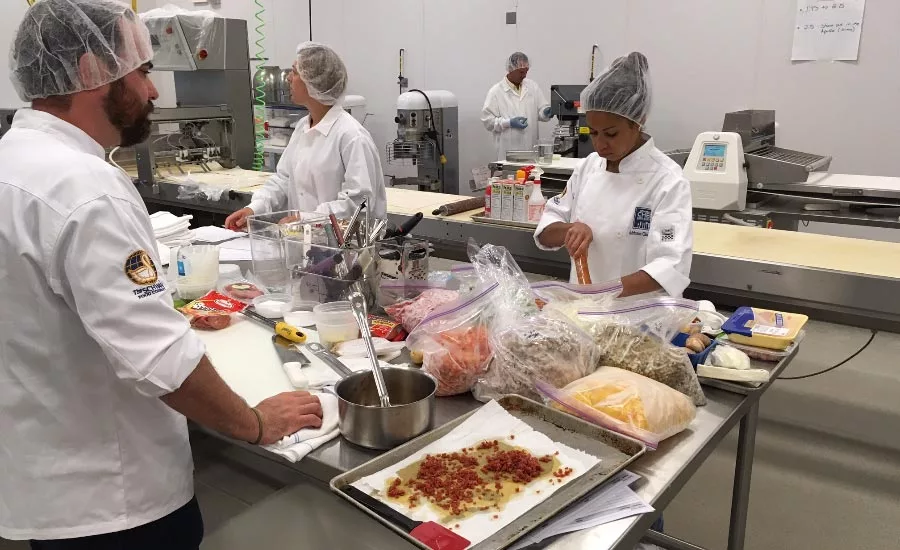Schwan asks chefs to collaborate on new snack ideas
The Chef Collective is part of Schwan’s effort to develop new snacking concepts and clean label offerings, as well as change misperceptions about frozen foods.

With the deluge of new meal kit companies popping up delivering directly to customers, Schwan Food Company was one of the first to corner the market on home-delivered foods.
The company started in 1952 when Marvin Schwan delivered ice cream to families in western Minnesota. When more products were added, and eventually product lines were developed, Schwan’s Home Service food business expanded into more markets, and eventually the company entered into grocery and foodservice spaces.
Now, 64 years later, Schwan is still working to introduce new product offerings, this time through its Chef Collective initiative.
The company invited eight chefs from across the country, including Food Network personality Jet Tila and past Top Chef contestant Stephanie Cmar, to collaborate and ideate new snacking concepts.
On July 27 and 28, chefs led brainstorming exercises and then cooked a variety of new foods at the company’s research and development center in Marshall, MN. The Chef Collective was first formed in 2015 to help Schwan identify trends and bring concepts to fruition.
“We take an open innovation approach,” says Pat Surprenant, principle research scientist for Schwan’s research and development.
Using consumer research gathered from IRI, grocery stores and Schwan’s own home food delivery data, the chefs were tasked with developing new products to address frozen foods currently missing in the retail space. After conceptualizing, the ideas were executed in Schwan’s product development kitchen.
Michael Gunn, directory of culinary, research and development at Schwan, says the Chef Collective is an important part in the company staying ahead of food trends, such as offering more authentic, exotic flavors that are region specific.
“We do this to be better positioned, instead of having to chase the customer,” says Gunn.
Also, the company is keeping an eye on the future macro trends, says Susan Allen, senior marketing director of innovation at Schwan’s Consumer Brands, such as developing more clean label offerings.
“We want to ensure our consumers’ needs are being addressed,” she says. “There’s more flexibility in eating meals now with consumers snacking multiple times a day. So, for instance, we’re looking at our traditional pizza size and evaluating other formats.”
Pradyot Ghosh, senior food scientist, says Schwan is working to correct any misconceptions consumers might have about frozen foods. For instance, frozen vegetables can contain more nutrients than raw vegetables that have been shipped because frozen vegetables have been allowed to ripen before picking, which is not the case with much of fresh produce.
“Many of Schwan’s products are minimally processed,” he says.
The research and development center houses a number of laboratories used to develop new products and processes. Before taking new concepts to Schwan’s major manufacturing facilities, prototypes are made and tested, and process steps are determined before they leave the building. The company even makes use of a 3D printer to speed up production development, printing out sample cutters or nozzles to see how they work without having to employ a machine shop.
In addition, the facility includes the Microwave Center of Excellence Packaging Laboratory where packaging concepts undergo testing and analysis. Packaged products are put through drop-testing to see how they handle abuse, as well as sealant testing to check for leaks. Among other tools, an infrared camera is used to determine how a product cooks in its package and how it interacts with certain materials. Engineers then work to solve possible cooking problems and simplify heating directions.
Looking for a reprint of this article?
From high-res PDFs to custom plaques, order your copy today!







